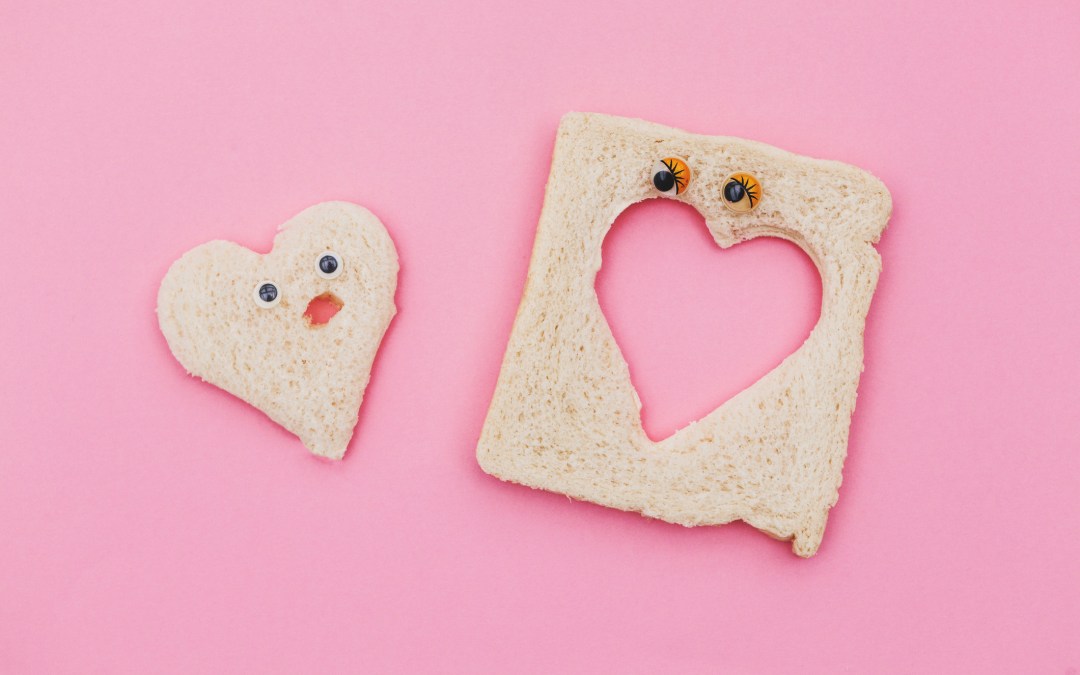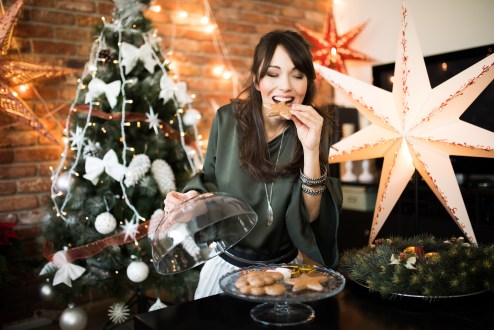Mindful dining: my relationship with food
Rachel Chalmers was recovering from an eating disorder when she went on honeymoon to Japan. She discovered a culture where food is an art form, and eating a practice in mindfulness, and it helped transform her relationship with food

By the time our feet first met Tokyo’s soil after 10 hours of air travel, my husband and I were exhausted, but this was the first day of our honeymoon and there was no way we weren’t going to explore the city. We asked our hotel concierge to provide a dinner recommendation and he handed us a torn slip of paper covered in Japanese characters. We shrugged, piled into a cab and – sleep-deprived drones – passed our driver the note.
As soon as we arrived at the restaurant, I was hit by a wave of panic. The scent of hot oil filled the blistering summer air and the plates in front of our fellow diners were filled with mountains of battered food. The hotel had sent us to one of Tokyo’s first dedicated tempura restaurants and, with little knowledge of the Japanese language, we had no choice but to be seated as the smiling staff ushered us to our table.
My mind swirled with worry: How many calories are in this? How will I look in my bikini tomorrow? Even – I want to go home! My husband was adamant that we stay and I was too agitated to put up a fight. But, after nearly 10 years of being thrown from anorexia to bulimia and finally recovery, my eating disorder had crept back; the unwelcome guest at the table.
Reminders of inner turmoil
Memories of my struggle overwhelmed me. At the height of my illness, I would have felt ugly, ashamed and unworthy of my place at the restaurant. I would have already begun to imagine how the meal would affect my reflection – and I’d avoid mirrors in fear of what I believed to be a revolting appearance.
I was stronger now, and had learned to ignore those lies, yet my hands still shook as I thumbed through the menu written entirely in Japanese. As tears of frustration welled up, my husband took my hand and whispered, ‘This place is incredible. I’m so happy to be here with you.’ And then I remembered to breathe.
We ordered by pointing to photos on the menu, our fingers crossed that we hadn’t requested something too daring. I still kept a running tally of calories consumed throughout the day it was exhausting – but for the first time since beginning my recovery, I decided to just eat whatever appeared on my plate. It was as if my surroundings – the centuries-old family business vibe, the buzzing atmosphere, the exotic culture, the sense of mystery – motivated me to approach food differently, if only for a night.
I watched the chef hand-dip items into hot oil with a surgeon’s precision; the sous-chef chop vegetables and splay them onto plates like miniature sculptures. It was like watching artists at an easel, and I realised that the Japanese dining culture isn’t about mere sustenance; it’s about the meditative exercise of cooking, using ingredients unique to the region and sharing culinary creations with others.
Bite by bite, I felt my confidence build as I savoured umami flavours and washed away my anxieties with each sip of matcha green tea. A sense of calm enveloped me, and I made peace with my plate. After just one small glimpse of Japanese culture, I was yearning to learn more. Before boarding Japan’s bullet train to explore the city of Kyoto and the seaside village of Ako, we traversed Japan’s capital city for a taste of culture: from the quirky restaurants of Akihabara where cosplayers [people who dress up as characters from Japanese films or books] presented plates of panda-shaped pancakes, to the winding pathways of ‘Little Edo’, where we admired the Edo-era architecture and munched on traditional Japanese snacks.
I began to feel an unfamiliar sense of excitement about food. Each meal was a multisensory experience steeped in culture, adventure and history; I awoke each morning with an eagerness to discover new dishes. From the sting of wasabi to the richness of miso, Japanese cuisine’s unique flavours forced my anxiety into the background.
Eating with your eyes
It wasn’t until we visited Japan’s Buddhist temples that I began to understand the origin of its eating practices. As we ascended the wooded hills of the Kiyomizu-dera temple in Kyoto, I lost my breath – from the temple’s wooden stage, we were presented with an imposing view of maple trees, Kyoto’s Otowa Waterfall and the ancient city spilling out onto the horizon. Kiyomizu-dera translates literally to ‘pure water temple’ and it is home to one of the oldest schools of Buddhism.
After my visit to the temple, I noticed that the Japanese people have a Buddhist approach to dining stemming from the ancient practice of mindfulness. Living with a conscious awareness of the present moment, paying close attention to both one’s immediate surroundings and the emotional and physical feelings inside oneself – the Japanese people apply this to food. The ritual of cooking and eating is celebrated not only as a meditative exercise, but as a vehicle for artistic expression. ‘Ma de taberu’, meaning ‘to eat with your eyes’, is central to the Japanese dining experience. Tokyo’s Tsukiji fish market was my first encounter with mindful eating; I watched as fishermen sliced sashimi and arranged the pieces into the shape of a rose. I appreciated the care taken to catch and prepare the fish, took in the market’s atmosphere and savoured every bite.
As I absorbed the Japanese way, I learned to turn off my mind’s autopilot and luxuriate in my experience; the colours shine brighter on my plate, the flavours dance on my tongue. Now, I listen to what my body tells me it needs.
After three weeks, our honeymoon came to a close. As we enjoyed a plate of okonomiyaki – a popular comfort food of pancakes – on the beaches of southern Japan, I reflected on the growth that had taken place both in my new marriage and in my relationship with eating. If I hadn’t undone my too-tight elastic and let my hair down on that pivotal night in the tempura restaurant, we’d have shared a very different honeymoon – our most meaningful experiences were centred around food and, as Japanese cuisine is so firmly ingrained in its culture, to deprive myself of it would be to deprive myself of its culture. Not only was our honeymoon an intimate lesson in Japanese history that has sparked a lifelong interest, it has planted a seed of healing that I intend to grow for the rest of my life.
Soul food
Now, four years later, when I enjoy the ceremony of Japanese cooking and eating in my own home, my mind is thrown back to the honeymoon where food finally found its way into my heart. And when my long-lost eating disorder edges back into my mind, I unleash my secret weapon: Whether it’s a visit to a Japanese grocer or a nostalgic chat with my mum who spent her childhood in Tokyo, a taste of Japan reminds me that, despite what my eating disorder once urged me to believe, eating doesn’t make me weak, it makes me human. Food is strength and enjoyment and community and love – and I need all of that, in equal measure, to survive.
How to eat with mindful intention
Every time you sit down for a meal, try these simple steps to help you enjoy every bite in the here and now…
Set the scene
Take a break from scrolling through social media to remove any distractions. Notice your immediate surroundings and allow yourself time to fully experience the present moment.
Engage your senses
Bring your awareness to each of your five senses – is your food hot or cold, salty or sweet? Acknowledge each sensation that your food creates.
Learn your food’s story
Reflect on your meal’s history. Did your produce come from a local grower? Did you spend hours preparing and cooking it? Take time to appreciate its journey.
Image: Getty








